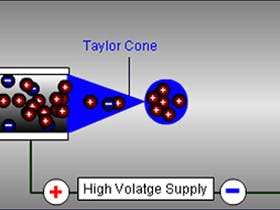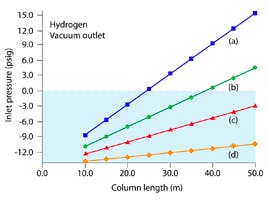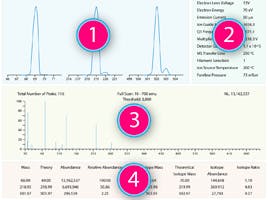
18 Nov 2020
10 Tips for Electrospray Ionisation LC-MS
These 10 tips for optimizing LC-Electrospray Ionisation (ESI)-MS help to achieve the best possible results every time. They were collated by the Element team to form a beginner’s guide to LC-(ESI)MS and as a primer for those who are already using the technique.
1 Optimise the Sprayer Voltage
This is often a parameter that is set and never adjusted again, which may work the majority of the time, and can certainly be a good approach if a variety of users with a myriad of samples are using an instrument. However, it isn’t ideal for all analytes. If you are setting a voltage for a walk-up and use (open-access) instrument it is a good idea to use lower electrospray voltages. Taking time to adjust the sprayer voltage can lead to vast improvements in MS sensitivity.

Figure 1: Various Spray modes in electrospray (ESI) LC-MS.
The use of lower sprayer voltages is advisable to avoid phenomena such as rim emission or corona discharge both of which can result in an unstable signal or complete loss of MS signal (Figure 1). In negative mode reducing the sprayer potential will help to avoid discharge. In positive ion mode the appearance of protonated solvent clusters such as H3O+(H2O)n from water and CH3OH2+(CH3OH)n from methanol indicate the presence of discharge; this can be remedied by avoiding highly aqueous eluent systems.
Within the ion source analytes may also exhibit unwanted side reactions such as redox processes which could reduce signal intensity, moving to lower sprayer voltages can also mitigate these types of reaction.
As a rule of thumb, the more aqueous the environment in which the sample is introduced, the higher the sprayer potential will need to be. Never is the age-old adage truer ‘if a little bit works, a little bit less probably works better’ (Tip 10).
2 Optimize the Sprayer Position
The position of the sprayer is a parameter that can and should be optimized, but its optimal setting is likely to be one which is viable for providing high signal quality across a wide range of analytes. Analytes with varying surface activity (sensitivity constant K) will exhibit different responses depending on the position of the sprayer relative to the sampling cone (Figure 2). Primarily this is due to the time taken for the analyte to be liberated into the gas phase under the Atmospheric Pressure Ionisation (API) conditions (primarily the drying gas temperature and flow rate), which will differ for differing analytes depending upon their ability to migrate to the droplet surface and be liberated into the gas phase as well as the eluent composition at time of elution. At lower concentrations any change in the sprayer position will cause the relative response of analytes to change (Figure 2).

Figure 2: Analyte response optimisation in ESI LC-MS using sprayer position optimisation.
Typically, smaller, more polar analytes will benefit from the sprayer being at its farthest setting from the sampling cone, with larger more hydrophobic analytes benefiting from the sprayer being closer to the sampling cone.
3 Reduce or Eliminate Salts
The formation of metal adduct ions (i.e. [M + Na]+ and [M + K]+) in positive ion mode is a common phenomenon which can result in only the metal adduct ion being present in the MS spectrum, therefore, we need to be aware of and remember to look for these species. It can also be advantageous to try to avoid the formation of adducts altogether as their formation can lead to unusable mass spectra.
These types of adducts can be avoided by using plastic instead of glass vials. The glass manufacturing process uses a variety of metal salts which can be leached from the glassware by aqueous solvents. However, the use of plastic vials can also lead to the presence of plasticizer peaks within spectra, although these tend to be less problematic as they appear at fixed m/z values and can be discounted when interpreting spectra. Also note that HPLC solvents such as acetonitrile, can often contain surprisingly high amounts of metal ions such as sodium – choose your solvent grade carefully!
Soaps and detergents are an insidious source of salts and should be avoided when running LC-MS analyses.
Biological samples will have high concentrations of various salts which can lead to the formation of unwanted adducts and poor quantitative results. The use of rigorous sample preparation protocols (SPE, liquid-liquid extraction etc.) can remove many of these matrix interferences to produce good ESI results.
One of the primary causes of metal ions is from the previous user so please be respectful of other instrument users and flush the instrument thoroughly after every run.
4 Select an Appropriate Solvent
For electrospray ionisation (ESI) reversed phase solvents (water, acetonitrile, methanol) are preferable as they favour the formation and transfer of ions from the liquid to the gas phase. Normal phase solvents (hexane, toluene, dichloromethane) cannot support ions in solution and are, therefore, not suitable for use with ESI (they can, however, be used with atmospheric pressure chemical ionization APCI).
When optimizing ESI applications the surface tension of the solvents should be considered. Solvents with low surface tension (i.e. methanol and isopropanol, Table 1) allow for stable Taylor cone formation and, hence, a stable and reproducible electrospray. The Rayleigh limit will be overcome at lower potential (Table 2, Equation 1) and this will tend to lead, on average, to smaller droplets being produced which aids in the ion formation process and can lead to an increase in instrument sensitivity.
Lower potential difference across the system will be required for effective spraying when using lower eluent water content (see Tip 1). This reduces the risk of spraying in rim emission mode and lowers the possibility of electrical discharge at the capillary tip. The addition of a small amount of methanol or isopropanol (1–2% v/v) to a highly aqueous HPLC eluent can often bring about an increase in instrument response, as the surface tension is lowered.
| Solvent | Surface Tension (dyne/cm) | Dipole | Dielectric Constant (at 20 oC) | Viscosity (cP) | Vapor Pressure at 25 oC (mmHg) |
|---|---|---|---|---|---|
| Methanol | 22.5 | 2.87 | 21.7 | 0.59 | 127 |
| Isopropanol | 21.79 | 1.69 | 19.92 | 2.40 | 45.4 |
| Acetonitrile | 19.10 | 3.44 | 37.50 | 0.38 | 88.8 |
| Water | 72.80 | 1.87 | 80.10 | 1.00 | 23.9 |
Table 1: Physical properties of selected solvents.

Where:
γ = solvent surface tension
rc = LC capillary outer radius
d = distance from the LC capillary tip to the MS inlet
| Solvent | γ (N/m) | Capillary Voltage (VON, kV) |
|---|---|---|
| Methanol | 0.0226 | 2.2 |
| Isopropanol | 0.0214 | 2.0 |
| Acetonitrile | 0.030 | 2.5 |
| Water | 0.073 | 4.0 |
Table 2: Threshold (onset) electrospray voltages.
Under gradient conditions the eluent composition changes with time and, therefore, so will the properties of the ESI spray. This can affect ion production processes and there is often a sweet spot for ion production. For example, the analysis of Penicillin G with varying percentages of acetonitrile in the mobile phase produces MS responses with varying intensity (Figure 3). Optimization of the analyte retention (i.e. optimizing the HPLC separation) could lead to improvements in sensitivity. Alternatively, where specific analytes are of interest, optimisation of the source conditions using analyte infused in the eluent composition at which the analyte elutes can be helpful in determining optimum instrument settings.
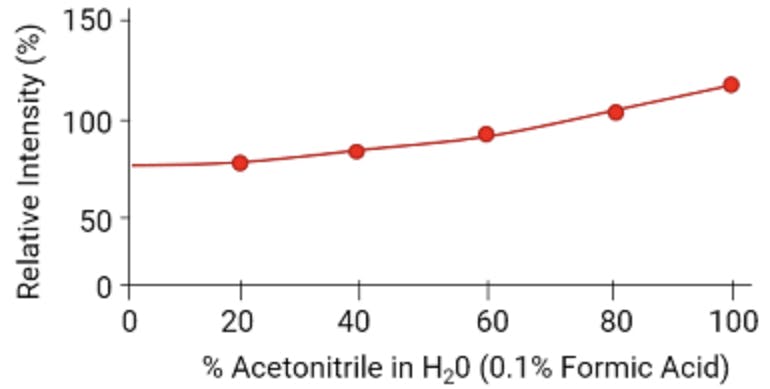
Figure 3: Relative response of Penicillin G with varying percentages of acetonitrile.
5 Optimise the Cone Voltage
The cone voltage (also known as the orifice voltage and declustering potential) is used for three purposes:
- To extract ions from the atmospheric pressure region of the ion source into the high vacuum region of the mass analyzer
- To induce in-source fragmentation (CID) for structural determination
- For declustering heavily hydrated ions to reduce their mass and reduce baseline noise
In addition, this parameter can be used for some structural determination via in-source fragmentation. In fact, when the cone voltage is increased, ions are accelerated, undergoing collisions with gas species (solvent vapor and desolvation gas) resulting in some fragmentation. Bear in mind that cone voltage is not selective, but it can be used to generate certain ions, in particular, it can be adjusted to obtain either pseudomolecular ions (of a compound) or structural information (product ions via fragmentation).
Typical cone voltage parameters for both ESI and APCI are in the region of 10 to 60 V.
The cone voltage provides a means to reduce the incidence of ion clusters (declustering potential), which will reduce the complexity of resulting spectra and reduce spectral noise. Note that your voltage settings may be transferable to another instrument.
6 Optimize Gas Flow Rates and Temperatures
Initial formation of droplets at the capillary tip and constriction of their size, desolvation rate, and eluent flow rate all have a major impact on ESI efficiency.
The practical upper limit to eluent flow in pure electrospray is 10-20 µL/min. depending upon the solvent composition. Capillary design may be modified to increase the tolerance of the electrospray process to increases in eluent flow rate, liquid surface tension or electrolyte concentration.
The ideal in terms of capillary tip droplet charging is to have a small drop that forms over a relatively long period of time. This will ensure that the droplet contains many charged species and the surface spacing of the charges will cause the initial on set of coulombic fissions at a point within the source that will allow optimal sampling of gas phase analyte ions.
The use of high pressure, high flow rate nitrogen from a concentric tube at the capillary tip means that pneumatically assisted ESI optimizes at slightly higher flow rates than the non-assisted technique. In general, pneumatically assisted ESI optimizes at flow rates of around 0.2 mL/min., but flow rates of up to 1.0 mL/min. can be endured by the source with a moderate reduction in sensitivity.
Essentially, for a given eluent flow rate (flowing through the capillary) the nebulizing gas flow rate has to be optimized.
In LC-MS, both instrument response and sensitivity will decrease with the size of the droplets formed at the capillary tip. By introducing an axially sprayed gas around the forming droplet (nebulizing gas) the droplet size is restricted and the droplets are charged more efficiently. The ion source temperature is usually set to 100 oC. A desolvation gas (usually nitrogen at high temperature) is also delivered through the ion source to help evaporation and solvent removal. Table 3 lists common settings for the aforementioned parameters.
| Parameter | ESI | Pneumatically Assisted ESI* |
|---|---|---|
| Eluent flow rate (µL/min.) | 1-5 | 100-1,000 |
| Nebulizing gas (N2, L/min.) | 0 | 1-10 |
| Desolvation gas (N2, L/min.) | 1-1.5 | 3-9 |
| Ion source temperature (oC) | 100-150 | 100-400 |
Table 3: Optimum interface gas parameters for ESI. *Optimum flow rates near 250 µL/min.
7 Promote Analyte Ionisation, choose the correct MS Interface Polarity and avoid Ion Suppression
Whilst there are several different possible charging mechanisms in electrospray ionisation, including tribe (induced) charging, ion transfer and adduction, by far the most effective means of generating a signal for ionogenic analytes is to pH adjust the HPLC eluent to ensure the analyte is in the charged form. That is, two pH units above the analyte pKa for acidic species and two pH units below the pKa for basic species. Whilst this may present some challenges in reversed phase retention of these more highly polar forms, some development work to ensure good retention will pay rewards in terms of signal intensity. Strategies such as the use of embedded polar stationary phases, reduction in eluotropic strength of the starting eluent composition and the use of HILIC based separations can all be considered to obtain suitable retention. One should take care to remain within the useable pH limits of the bonded phased used.

Figure 4: Eluent pH adjustment to ensure ionogenic analytes are in the ionised form prior to detection.
It is also true that, when dealing with most ionogenic analytes, it is often difficult to predict the correct mode of ionisation, either ESI, APCI or APPI and indeed whether the interface polarity should be either positive or negative. for the analytes of interest. It is always advisable to screen the various interface types and their relative polarity to assess which mode of ionisation will give the most favourable response for the compounds of interest.
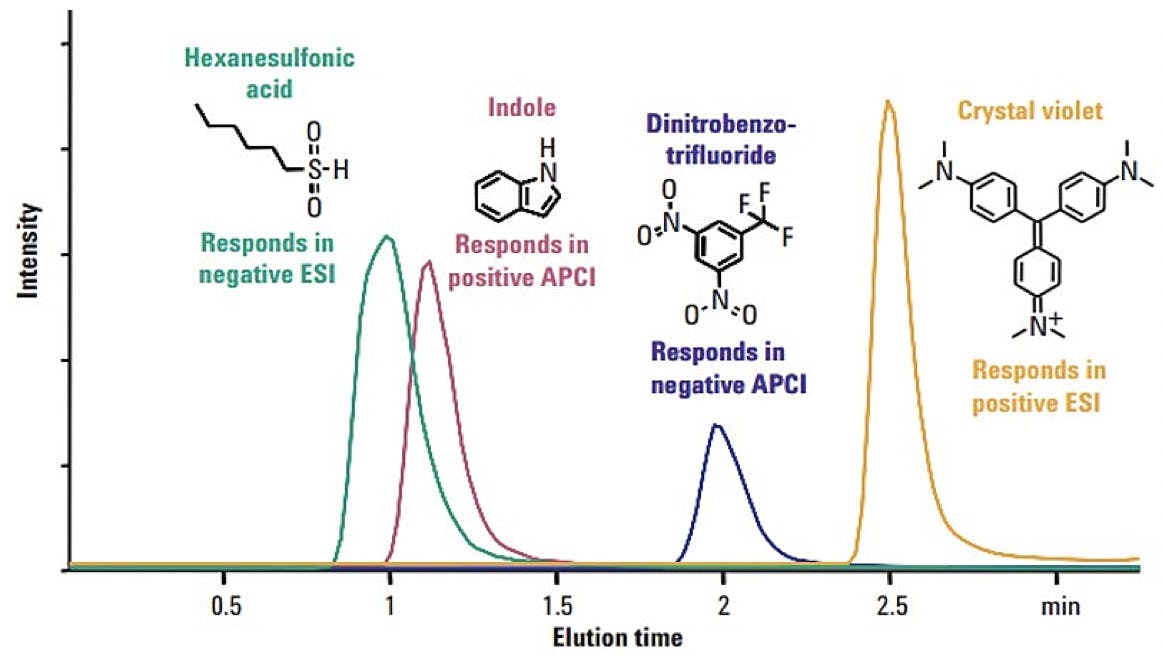
Figure 5: Screening of various analytes to determine optimum response in various API modes and polarities.
In the presence of a second electrolyte species, the intensity of the analyte can be suppressed. This phenomenon is termed ion suppression and can lead to the artificial and irreproducible reduction in analyte signal when determinations of the analyte at constant concentration are performed on samples where the background electrolyte concentration varies. Perhaps the most usual presentation of this situation is the analysis in which the nature of the sample matrix changes (i.e. bioanalysis, environmental analysis etc.). The reverse situation can also occur in which analyte response is artificially enhanced — known as ion enhancement.
Trifluoroacetic acid (TFA) and triethylamine (TEA) are particularly adept at causing ion suppression; each interacts with the analyte in different ways resulting in a suppressed signal. TFA should be avoided in high concentrations because, while it is a good source of protons, the trifluoroacetate moiety has a high propensity for ion pairing with positively charged species. Ion pair formation in the ESI droplet is a solution phase process and can neutralize analyte ions of interest (Figure 6). In the case of TFA the ion pairs formed are strong and remain paired during the evaporation process resulting in the much reduced ESI sensitivity in positive ion mode.
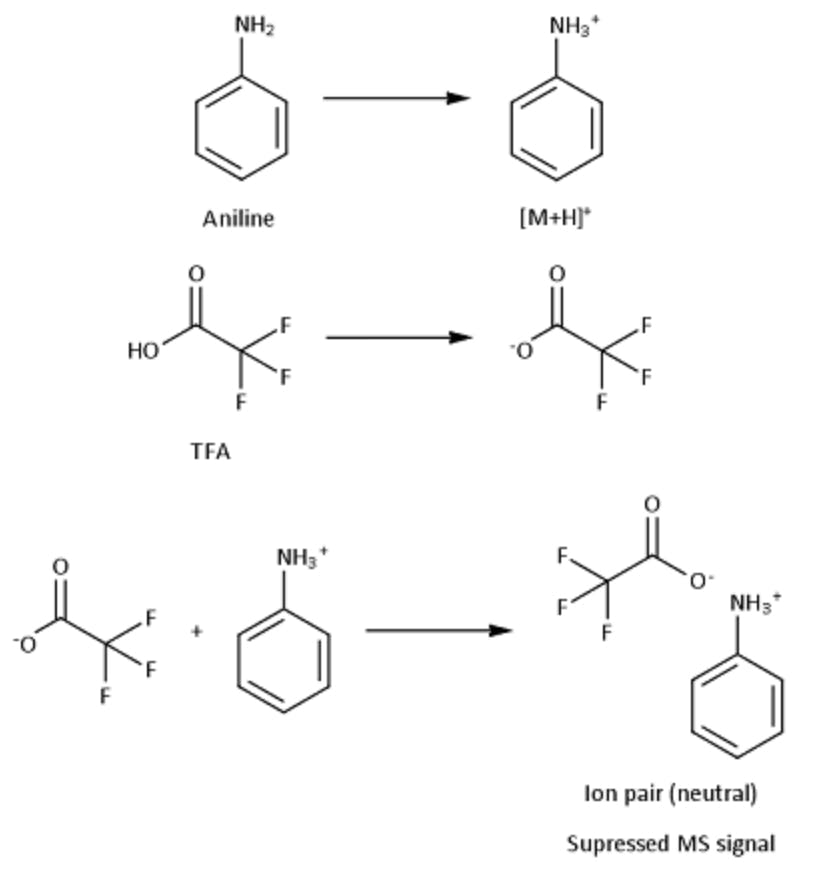
Figure 6: Formation of ion pair between aniline and TFA resulting in MS signal suppression.
TEA and other amines can be problematic because they have a high gas phase proton affinity. This means that just outside of the droplet, in the gas phase, interactions can occur where such species steal protons away from analytes of interest. This can be a good thing if you are trying to make negatively charged ions, but it can be highly detrimental to the formation of positively charged analyte species.
Other common reagents such as the formate ion may form an ion pair in solution that subsequently dissociates on transition to the gas phase. Signal suppression effects in such cases are much less drastic.
To avoid ion suppression steps, proper sample preparation should be undertaken. Care should be taken to remove highly lipophilic species and detergents at all costs. Never use detergent-based soaps on glassware that will eventually hold solutions for ESI-MS analysis. Using more rigorous preparation techniques such as solid phase extraction can reduce the incidence of ion suppression from matrix components relative to less selective approaches such as liquid-liquid extraction and protein precipitation. If ion pair reagents must be used select a volatile one such as formic acid or try to keep concentrations of additives such as TFA and TEA as low as possible (a concentration of under 0.1% v/v).
8 Tune and Calibrate the Instrument
The process of tuning and calibration is crucial to guarantee analysis repeatability across LCMS instruments and labs. By calibrating the spectrometer, confidence that the detected mass of an ion will agree with its true mass. Likewise, tuning the MS will give confidence on signal response (intensity).
The process of tuning and calibration is critical to achieve optimum LC-MS results, as this process sets:
- Voltages on the source elements
- AMU gain and offset for the correct peak width
- The electron multiplier voltage
- The mass axis for proper mass assignment
Tuning and calibration is important as it:
- Calibrates the m/z scale of the spectrometer versus standards of known m/z ratio
- Provides the means (if performed on a periodic basis) to realize that spectrometer contamination or degraded electronic components have changed the selected mass positions
- Ensures repeatable analysis from instrument to instrument or lab to lab
- Checks that spectrometer gives expected relative ratios of ion fragment intensities for a target compound
- Acts as a diagnostic tool to indicate the service/cleaning requirements of the spectrometer
- Provides results that act as a chronicle of system performance
Calibration
Mass calibration is carried out by infusing a standard with a well-known mass spectrum into the LC-MS instrument and adjusting the response of the MS components accordingly. Broadly speaking, the user should provide the known m/z values for the peaks in the mass spectrum of the standard, so the system can make appropriate adjustments. Modern LC-MS have very stable m/z scales, so strictly speaking, mass calibration may not need to be repeated for several days; however, it is a good practice to check the calibration on a daily basis.
Most instruments are calibrated using infused tune compounds that contain spectral lines due to ions whose mass is known to the level of accuracy required, i.e. unit mass values for quadrupole mass analyzers or accurate mass values for double focusing magnetic/electric mass analyzers. Mass axis calibration should be independent of the API technique used for ion generation so long as the calibrant is capable of efficient ionization under a given set of interface conditions. Calibration of the mass axis requires series of ions with known mass that cover the required operating mass range, the ions being as evenly spaced as possible.
Calibration of the mass axis is usually a discrete process that is carried out at regular intervals to ensure correct mass assignment, i.e. at the beginning of each working day or prior to a campaign of analysis, depending upon the laboratory and its applications. However, when working at high resolution where high mass accuracy is required a lock mass compound may need to be constantly infused alongside the analyte. This is particularly prevalent with time-of-flight mass analysers where there may be a tendency for the mass axis calibration to drift due to the highly sensitive nature of the mass analysing device.
Tuning
The voltages applied to the various ion source components must be tuned to achieve target ion abundances for various analyte ion masses. This ensures optimal instrument sensitivity and a predictable response across a range of masses, which allows for subsequent library searching of spectra.
During tuning (sometimes called autotuning), the relative and absolute abundances of fragments of a known tune compound are established and the mass assignment, resolution and spectral peak width generated by the mass analyzer are also adjusted and set.
The tuning process involves adjusting a number of mass spectrometer parameters. Some are purely electronic and only affect the way the electronics process the signal. Other parameters affect the voltage settings or current to ion source components, the mass analyzer and detector. In general terms, the tuning process will set:
- Voltages on the source elements
- Gain and offset of the mass analyzer for correct spectral peak width (resolution)
- The electron multiplier voltage
- The mass axis for proper mass assignment
The importance of tuning cannot be overemphasized and is performed to check the mass spectrometer is working correctly and/or to ensure that spectra (mass assignment and relative abundance of spectral signals) resemble a previously determined standard. The process of tuning will:
- Check to see that spectrometer contamination or degraded electronic components have not changed assigned mass positions (calibration of the mass axis)
- Ensure repeatable analysis from instrument to instrument (or lab to lab)
- Check the spectrometer gives expected relative ratios of ion fragment intensities for a target compound
- Act as a diagnostic tool to indicate the service/cleaning requirements of the spectrometer
- Act as a chronicle of system performance
- Match fragments from a known calibration compound and adjust mass axis so it agrees with the expected mass assignments
As API-MS produces little fragmentation from a single ion LC-MS calibration and tuning is usually carried out using a mixture of compounds.
Calibration of the mass axis requires a series of ions with known mass which cover the required operating mass range, with the ions being as evenly spaced as possible. A wide range of substances are available for calibrating the m/z scale (Table 4-5).
| Calibrant | API Mode | Mass Range (Da) |
|---|---|---|
|
Bovine ubiquitin |
ESI(+), APCI(+) |
Cell 365-1,500 |
|
Cesium iodide |
ESI |
Up to 3,000 |
|
Cesium tridecafluoroheptanoate |
ESI |
Up to 10,000 |
|
Horse heart myglobin |
ESI, APCI |
700-1,600 |
|
Lysozyme |
ESI |
1,000-2,100 |
|
Myoglobin |
ESI |
600-2,500 |
|
Polyethylene glycol |
ESI |
50-2,000 |
|
Polyethylene glycol + ammonium acetate mixture |
ESI(+), APCI(+) |
80-1,000 |
|
Polypropylene glycol |
ESI |
50-2,000 |
|
Polyethylene glycol monomethyl ether |
ESI |
50-2,000 |
|
Polypropylene glycol sulfate |
ESI(-) |
300-1,700 |
|
Sodium trifluoroacetate |
ESI |
100-4,000 |
|
Sugar mixture (corn syrup, raffinose, maltose, and maltotetraose) |
ESI(-) |
100-1,500 |
|
Tetraethylammonium iodide |
ESI(-) |
Up to 6,000 |
|
Ultramark 1621 (perfluororalkoxycyclo triphosphazines) |
ESI |
Up to 6,000 |
|
Water clusters |
ESI |
Up to 10,000 |
Table 4: Selected ESI/APCI calibration standards
| Calibrant | Formula | Monoisotopic Mass (Da) | Average Mass (Da) |
|---|---|---|---|
| Angiotensin II, human, free acid | C50H71N13O12 | 1,045.5345 | 1,046.19 |
| Bradykinin, human, free acid | C50H73N15O11 | 1,059.5614 | 1,060.22 |
| Angiotensin I, human, free acid | C62H89N17O14 | 1,295.6775 | 1,296.50 |
| Substance P, human, free acid, …Met–OH | C63H97N17O14S | 1,347.7122 | 1,348.81 |
| Substance P, human, …Met–NH2 | C63H98N18O13S | 1,346.7281 | 1,347.65 |
| Neurotensin, human, free acid | C78H121N21O20 | 1,671.9097 | 1,672.95 |
| ACTH (CLIP), human, free acid | C112H165N27O36 | 2,464.1911 | 2,465.70 |
| Melittin, honeybee, …Gln–NH2 | C131H229N39O31 | 2,844.754 | 2,846.50 |
| ACTH (CLIP), human, free acid | C207H308N56O58S | 4,538.2594 | 4,541.13 |
| Insulin, bovine, β-chain, oxidized, sulfated C (R–SO3H) | C157H232N40O47S2 | 3,493.6435 | 3,495.94 |
| Insulin bovine | C254H377N65O75S6 | 5,729.6009 | 5,733.58 |
| Ubiquitin, bovine | C378H629N105O118S | 8,559.6167 | 8,564.86 |
| Lysozyme, hen egg, oxidized form | C613H951N193O185S10 | 14,295.8148 | 14,305.14 |
| Apomyoglobin, horse | C769H1212N210O218S2 | 16,940.9650 | 16,951.49 |
| Carbonic anhydrase, bovine | C1312H1998N358O384S3 | 29,005.6750 | 29,023.65 |
Table 5: Peptides and proteins frequently used for high mass calibration
Other alternatives such as mixtures of sugars and solvent clusters such as methanol clusters) are also available for calibrating the m/z scale of an API-MS instrument. Of course, series of proprietary solutions have been developed by different instrument manufacturers. For many years, poly ethylene glycol (PEG) and polypropylene glycol (PPG) were the most widely used calibrants for LC-MS; however, these compounds are very sticky and tend to remain in the system for long periods. As a consequence, their use is falling out of favour.
9 Select an Appropriate Starting Point
Where do you start with a new application when the list of parameters to optimize seems long and daunting? It is good to start with the operating conditions from a similar application (as most labs will be running samples with similar analytes). Next, perform a systematic study of the source variables, starting from the outside in. Most instruments will contain software which performs this task in the same fashion. First, optimize the sprayer voltage, then move to transfer line variables and beyond. Adjustment of any parameters associated with the mass analyzer itself is not normally needed, as these will have been optimized during some calibration steps or routine maintenance.
Finally, check robustness, ultimately robust reproducible methods are what is required from any analytical procedure. If a response curve can be generated for the API parameter (i.e. all voltages, flow rates, and temperatures in the ESI source) then these should be plotted, although, as we have seen previously, with sprayer voltage, it is not necessarily good practice to operate on a distinct maximum setting. This is due to the fact that small changes in that setting will manifest as a loss in performance very quickly. The instrument should be operated on a broad maximum (plateau) within the response curve, so that if a small change in the variable does occur it will not have a drastic effect on the measured response. The ability to resist small changes in response based on small changes in experimental variables is denoted as robustness.
10 If a Little Bit Works, a Little Bit Less Will Probably Work Better!
This is true for all ESI parameters (voltages, mobile phase additives etc.) and is a popular mantra which will serve you well when undertaking LC-MS analysis.
Whilst so much about modern API-MS has been developed to the point of ‘load and forget’ and in most cases this will enable us to generate a signal for many analytes, we sometimes forget that a certain degree of optimisation will generate data which is far superior to that obtained under ‘generic’ conditions.

